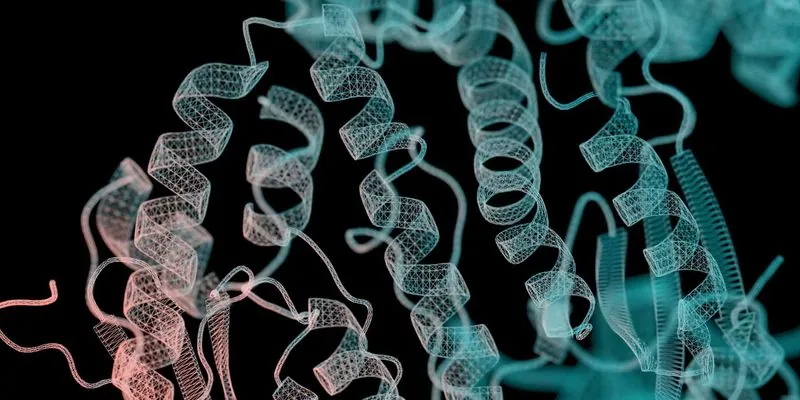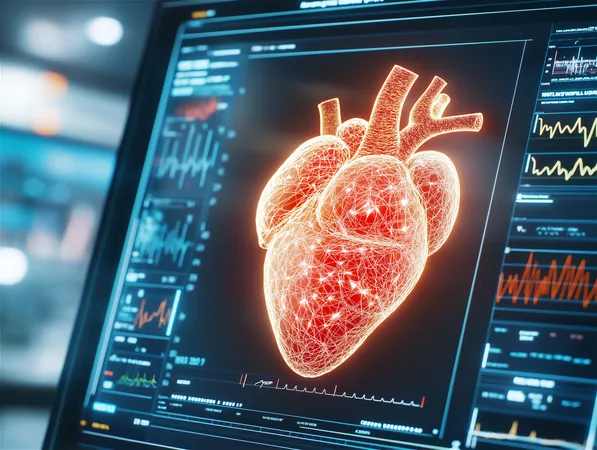
Unlocking the Secrets of 'Undruggable' Proteins: A Revolutionary Approach to Drug Discovery
2025-05-08
Author: Jia
Revolutionizing Drug Discovery with Chemoproteomics
The human body houses a staggering 100,000 unique proteins, each intricately structured from amino acids. The challenge for scientists has always been to understand how to interact with these proteins, especially when it comes to developing small molecule drugs that can effectively alter their functions.
Understanding a protein's shape is just the beginning. Although its conformation can indicate potential binding with small molecules, it fails to confirm whether these interactions happen in the complex cellular environments where diseases thrive.
Benjamin Cravatt, a chemist from the Scripps Research Institute, emphasizes the need to explore how drugs perturb proteins specifically in disease contexts. This realization led him and his team to create chemoproteomics, a field aimed at mapping how small molecules engage with proteins in their natural habitats.
Tackling the Challenge of 'Undruggable' Proteins
Many proteins in our bodies, termed 'undruggable,' present unique hurdles in drug development. These proteins, which can constitute up to 80% of the human proteome, lack conventional binding sites. Their complex structures often hide vital cellular regulators crucial for treating diseases like cancer and autoimmune disorders.
These elusive proteins sometimes possess hidden binding sites that become visible only when small molecules attach. Qing Yu, a biochemist from the University of Massachusetts, underscores the importance of identifying these cryptic pockets to better design drugs.
Innovative Approaches to Mapping Binding Sites
While determining crystal structures through traditional means is labor-intensive and slow, Cravatt's lab has pioneered a new strategy. Their research centered on covalent kinase inhibitors—small molecules that bond with cysteine amino acids to inhibit critical protein functions.
Keriann Backus, then a postdoc in Cravatt’s lab, spearheaded efforts to map all cysteines where small molecules could bind through a novel experiment involving a library of small molecule fragments. This systematic approach significantly expanded the understanding of protein interactions.
From Lab Innovations to Startup Success
In 2017, Cravatt co-founded Vividion Therapeutics to translate these laboratory breakthroughs into therapeutic possibilities. By ramping up their mapping technologies, the company aims to identify new drug candidates targeting various diseases, especially cancers.
Vividion's recent advancements have included promising candidates like VVD-130850, which inhibits the STAT3 transcription factor crucial for tumor growth, and VVD-159642, which disrupts the RAS-PIK3CA pathway, successfully entering clinical trials.
Tapping into Unique Mechanisms for Better Treatments
In a groundbreaking study in 2024, Vividion uncovered a new compound targeting the Werner syndrome helicase, pivotal for DNA repair. With encouraging results in halting tumor progression, the potential for life-saving therapies intensifies.
Yu highlights the significance of identifying distinct cysteine targets, avoiding the pitfalls of broad inhibition that often leads to side effects across similar protein families.
The Future of Chemoproteomics: From Cysteines to Novel Targets
As technologies enhance, chemoproteomics is on the verge of addressing previously unreachable binding sites—not just cysteines but potentially all amino acids. Backus aims to refine reagents for more effective screenings, while Yu is developing scalable methods to analyze thousands of compounds simultaneously.
The ultimate goal is not merely to find binding partners but to link them to functional outcomes. Integrating CRISPR technology could herald a new phase in understanding protein interactions, advancing drug discovery significantly.
While the journey is still unfolding, the synergy between chemoproteomics and drug discovery paints a promising future—one where even the most elusive proteins may finally meet their match.



 Brasil (PT)
Brasil (PT)
 Canada (EN)
Canada (EN)
 Chile (ES)
Chile (ES)
 Česko (CS)
Česko (CS)
 대한민국 (KO)
대한민국 (KO)
 España (ES)
España (ES)
 France (FR)
France (FR)
 Hong Kong (EN)
Hong Kong (EN)
 Italia (IT)
Italia (IT)
 日本 (JA)
日本 (JA)
 Magyarország (HU)
Magyarország (HU)
 Norge (NO)
Norge (NO)
 Polska (PL)
Polska (PL)
 Schweiz (DE)
Schweiz (DE)
 Singapore (EN)
Singapore (EN)
 Sverige (SV)
Sverige (SV)
 Suomi (FI)
Suomi (FI)
 Türkiye (TR)
Türkiye (TR)
 الإمارات العربية المتحدة (AR)
الإمارات العربية المتحدة (AR)